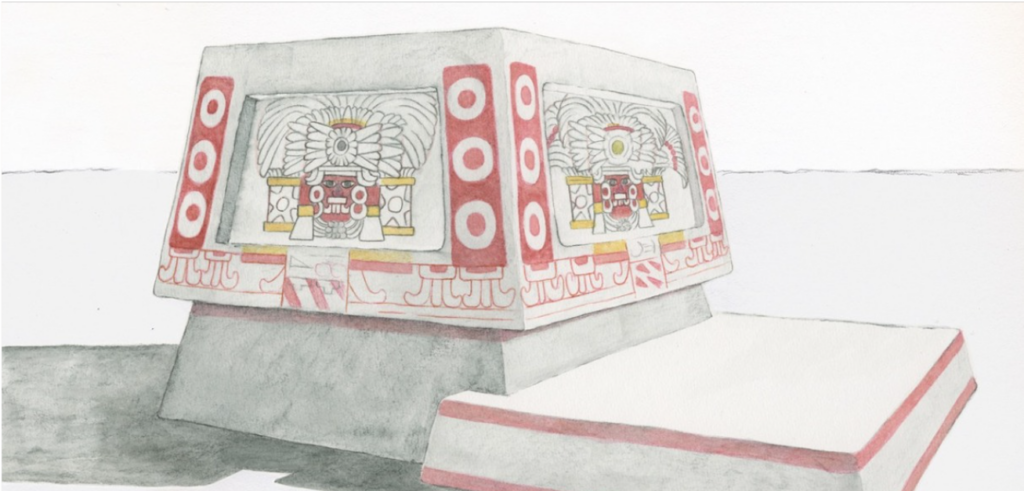
Its also when someone buried three babies in the courtyard, each near a corner of the altar (the fourth corner has a jar that probably once contained an offering, but no bones).
Each burial required breaking the stone floor, placing the tiny remains underneath, and then filling in the hole with crushed limestone.
Thats not the way most people in Tikal would have buried an infant, but its exactly how archaeologists have found several buried in very similar courtyards in faraway Teotihuacan.In other words, the people who lived in this compound and used this courtyard and painted altar were probably from Teotihuacan, or raised in a Teotihuacan enclave in the southern sector of Tikal.
The compound is practically in the shadow of a replica of Teotihuacans Feathered Serpent Pyramid and its walled plaza, where archaeologists unearthed Teotihuacan-style incense burners made from local materials.
This rendering shows what the altar might have looked like in its heyday.
Credit: Heather Hurst Sometime between 550 CE and 654 CE, based on radiocarbon dating, the foreign enclave in Tikal closed up shop.
That's around the time distant Teotihuacans power was starting to collapse.
But it wasnt enough to just leave; important buildings had to be ritually killed and buried.
That meant burning the area around the altar, but it also meant that people buried the altar, the courtyard, the compound, and most of southern Tikals Teotihuacan enclave beneath several meters of dirt and rubble.Whoever did the burying went to the trouble of making the whole thing look like a natural hill.
Ramirez and his colleagues say thats unusual, because typically once a building had been ritually killed and abandoned, something new would be built atop the remains.The Maya regularly buried buildings and rebuilt on top of them, Brown University archaeologist Andrew Scherer, a co-author of the recent study, said in a statement.
But here, they buried the altar and surrounding buildings and just left them, even though this would have been prime real estate centuries later.
They treated it almost like a memorial or a radioactive zone.
It probably spoke to the complicated feelings they had about Teotihuacan.Antiquity, 2017.
DOI: 10.15184/aqy.2025.3 (About DOIs).

 17
17






